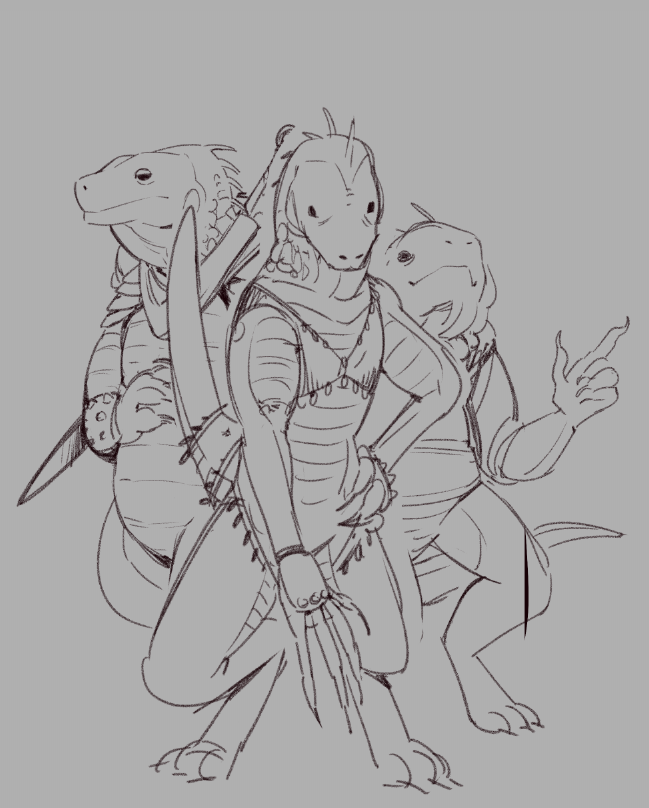Tokage (toh-kah-geh)
"The tokage slither underfoot and across many different lands, selling their wares and goods in hopes of affording a warm inn and a hot meal."
Basic Information
Anatomy
Biological Traits
Genetics and Reproduction
Growth Rate & Stages
Ecology and Habitats
Dietary Needs and Habits
Biological Cycle
Additional Information
Social Structure
Facial characteristics
Geographic Origin and Distribution
Average Intelligence
Perception and Sensory Capabilities
Civilization and Culture
Naming Traditions
Major Organizations
Beauty Ideals
Gender Ideals
Courtship Ideals
Relationship Ideals
Major Language Groups and Dialects
Common Dress Code
History
Interspecies Relations and Assumptions
Tokage
Ability Score Increase: When determining your character’s ability scores, increase one score by 2 and increase a different score by 1, or increase three different scores by 1. You can't raise any of your scores above 20. Size: Medium or Small Speed 30ft Sharp Fangs: You have a fanged maw that you can use to make unarmed strikes. When you hit with it, the strike deals 1d6 + your Strength modifier slashing damage, instead of the bludgeoning damage normal for an unarmed strike. Ambush Hunter: Your reflexes and agility allow you to move with a burst of speed. When you move on your turn in combat, you can double your speed until the end of the turn. Once you use this trait, you can’t use it again until you move 0 feet on one of your turns. Darkvision: You can see in dim light within 60 feet of you as if it were bright light, and in darkness as if it were dim light. You discern colors in that darkness only as shades of gray. Keen Senses: You have proficiency in the Perception skill. Languages: Common, Sandtongue, Add one new language of your choice.
Choose one Clan: Erenede Persaia - The plain treading clan of tokage known for their nomadic conquerers early on in their history, before being driven out by humans.
- Cultural Exchange: Through constant interaction with humans, Erenede Persaia have developed a small amount of human adaptability. You gain proficiency in one skill of your choice.
- Menacing Aura: You gain proficiency in the Intimidation skill.
- Savage Strike: When you score a critical hit with a melee weapon attack, you can roll one of the weapon’s damage dice one additional time and add it to the extra damage of the critical hit.
- Poison Resistance: You have advantage on saving throws you make to avoid or end the poisoned condition on yourself. You also have resistance to poison damage.
- Amphibious: You can breathe air and water.
- Natural Stealth: You can attempt to hide even when you are only lightly obscured by foliage, heavy rain, falling snow, mist, and other natural phenomena.
- Blindsight: You have blindsight with a range of 20 feet. Within that range, you can effectively see anything that isn't behind total cover, even if you're blinded or in darkness. Moreover, you can see an invisible creature within that range, unless the creature successfully hides from you.



